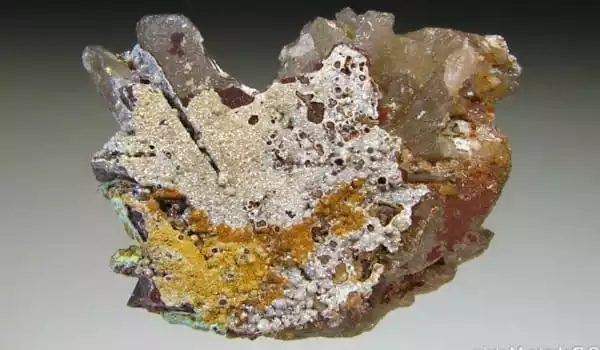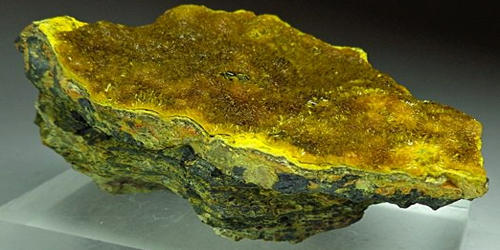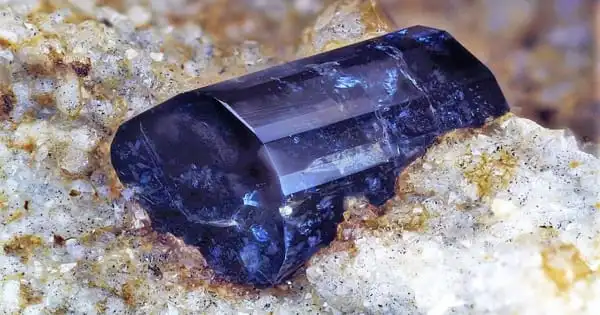Otavite, also known as CdCO3, is a rare cadmium carbonate mineral. It is a mineral composed of cadmium carbonate and isostructural with calcite. It is a mineral of the calcite group, which is a group of related carbonates that are isomorphous with one another. They have numerous physical qualities in common and can partially or completely replace one another, forming a solid solution series. Calcite group members all crystallize in the trigonal system and have flawless rhombohedral cleavage.
Otavite is named after the famous mineral deposit of Tsumeb, in Otavi Province, Namibia. It was first described in 1906 from the Tsumeb district near Otavi, Namibia.
General Information
- Category: Carbonate minerals
- Formula (repeating unit): CdCO3
- Crystal system: Trigonal
- Crystal class: Hexagonal scalenohedral (3m)
- Colour: White to yellow-brown or reddish

Properties
Otavite crystallizes in the trigonal system and forms encrustations and small scalenohedral crystals that have a pearly to adamantine luster. The color is white to reddish to yellow-brown. Its Mohs hardness is 3.5 to 4 and its specific gravity is 5.04. Associated minerals include azurite, calcite, malachite, and smithsonite.
- Lustre: Adamantine
- Streak: White
- Hardness: 3½ – 4 on Mohs scale
- Density: 4.96 g/cm3 (Measured) and 5.03 g/cm3 (Calculated)
- Specific Gravity:4.96
- Crystal System: Trigonal
- Member of: Calcite Group
Occurrence: A rare secondary mineral in the oxidized zone of hydrothermal base-metal deposits.
Otavite is an uncommon mineral found additionally in localities in Russia, Italy, Greece, England, Australia, China, Vietnam, and the United States among a few others. It is a secondary mineral and forms in oxidized, hydrothermal base-metal deposits.
Association: Smithsonite, cerussite, hydrozincite, hemimorphite, azurite, malachite, rosasite, olivenite, pyromorphite, calcite, fluorite.
Otavite can be found in association with smithsonite, cerussite, hydozincite, hemimorphite, azurite, malachite, rosasite, olivenite, pyromorphite, calcite, and fluorite.
















